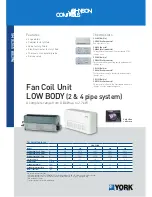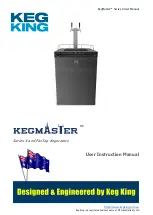
It is recommended that care be taken in the use of Thermo Scientific
Thermoflasks. Any product used under vacuum is a potential hazard and,
therefore, should be treated with caution. If in doubt, consult the safety
regulations of your laboratory or institution. Specific warnings are listed
below to avoid some of the more common errors.
Failure to follow proper procedures, heed warnings, and cautions can result in
failure of the flask with potential expelling of the contents and subsequent harm
to user.
Warning
Contact of liquid nitrogen with the skin or eyes may cause serious
(freezing) injury. When handling liquid gases, appropriate Personal
Protection Equipment (PPE) must be worn, such as goggles or facemasks,
and insulated or rubber gloves large enough to allow quick removal, and
insulated or rubber aprons.
s
Caution
A potentially dangerous situation could result from pouring liquid
gases into a Thermoflask without pre-cooling the flask. When pouring
liquefied gases from one container to another, the receiving container
should be cooled gradually to prevent thermal shock. The liquid should be
poured slowly to avoid splashing. A receiving vessel should always be
vented to the atmosphere and high concentrations of excess oxygen and/or
nitrogen should not be allowed to collect.
s
Warning
Nitrogen gas can cause suffocation without warning. Store and use
liquid nitrogen only in a well-ventilated place. As the liquid evaporates, the
resulting gas displaces the normal air in the area. (The cloudy vapor that
appears when liquid nitrogen is exposed to the air is condensed moisture,
not the gas itself. The issuing gas is invisible.) In closed areas, excessive
amounts of nitrogen gas reduces the concentration of oxygen and can result
in asphyxiation. Because nitrogen gas is colorless, odorless, and tasteless, it
cannot be detected by the human senses. Breathing an atmosphere that
contains less than 19.5% oxygen can cause dizziness and quickly result in
unconsciousness and death. Therefore, the use of oxygen monitoring
equipment is strongly recommended.
s
Caution
It is recommended to have this vessel tested by the manufacturer or
qualified cryovessel service technician every 7-10 years, regardless of any
problems (or lack thereof) there may have been in the past. This will help
insure your samples against sudden loss of liquid nitrogen due to vacuum
failure.
s
Warning
All Thermoflasks in stainless steel containers (catalog numbers
2122~2124) have vented lids to prevent build-up of gas pressure when
holding a gassing substance. The ability of the vent to release pressure
should be checked periodically.
s
Handling Thermoflasks
2
Thermoflasks























